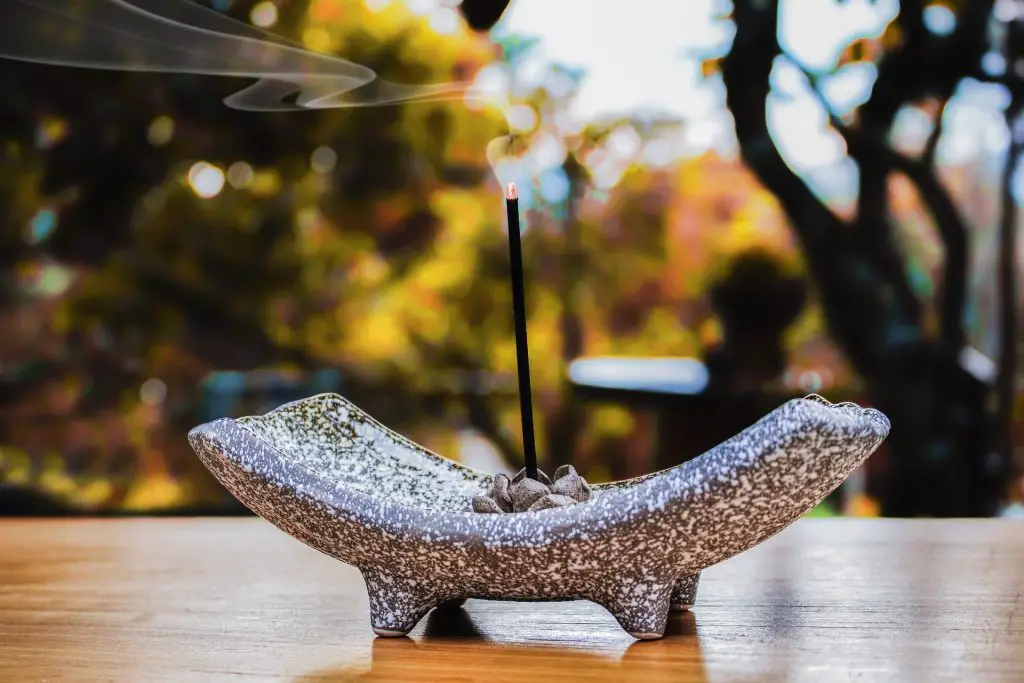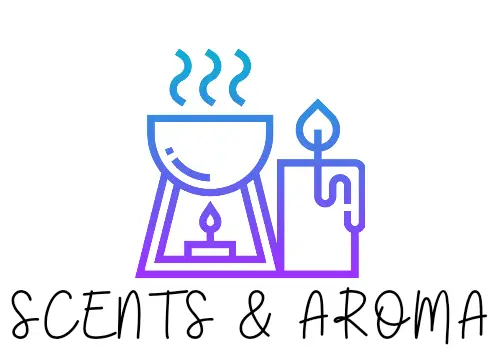Japanese incense is traditionally made of different natural wood barks, spices, and resins. They’re mixed with inert woods, usually cedars that don’t deliver any scent but give the incense sticks solidity.
Then, Mako, a plant resin is added to bind all the ingredients together. Smokeless incense sticks include natural ingredients such as charcoal that provides black color and more smokeless quality to the incense sticks. And when burnt, these incense sticks release very little smoke that looks more like a vapor.
Incense sticks have been produced in Japan since the 14th century. However, this technique of producing smokeless incense has only been recently in Japan in the last couple of decades. They’re also softer and more subtle. And most Japanese people like more subtle scents because they reside in small homes.
In today’s article, I will talk more about smokeless incense sticks and explain if they’re bad for you. I will also provide a detailed guide on how to make smokeless incense sticks, so let’s begin right away.
Is Smoking Incense Sticks Bad For You?

Burning incense sticks can add high levels of particulate matter to the indoor air. And many people ask if smoking incense sticks is bad for you. The truth is, yes, it is. These chemical compounds and particles are harmful because they’re small enough to inhale and get into your lungs as well as your bloodstream.
The EPA states they have been linked with lung inflammation, asthma, and even cancer. Moreover, long-term exposure to incense smoke was discovered to be associated with squamous cell lung cancer as well as upper respiratory cancers. Therefore, smoking incense sticks is really bad for you and your animals.
Further, the levels of nitrous oxide, formaldehyde, and carbon monoxide in this smoke can cause various respiratory problems like signaling asthma, inflammation in lung cells, etc. Kids and unborn babies aren’t resistant to the pollutants in the air either. On the contrary, they’re very susceptible to their effects.
However, you can still enjoy the scent without the smoke by creating smokeless incense sticks with unscented charcoal powder. Below, you will find a detailed guide on how to make smokeless incense sticks at home with ease along with some useful tips that will help you successfully complete this project.
How To Make Smokeless Incense Sticks?
Smoke and incense seem like they have to go together. To some people, incense without smoke seems wrong. Smoke is actually the result of incomplete combustion.
Smoke is composed of tiny particles thrown into the air by the heat of the burning. And the only way to eliminate smoke but still keep the scent is to create heating efficient enough to burn the incense completely. The key to accomplishing this is charcoal.
The charcoal really is the ultimate base material for most forms of incense making. It will burn hotter than most other base materials and it produces virtually no scent of its own.
It’s critical to utilize the right charcoal. You should utilize low scent charcoal that contains no potassium nitrate, sometimes called saltpeter.
Therefore, you should avoid any charcoal that’s labeled “self-lighting” or “easy-lighting”. The oxidizers used in those types of charcoal produce nasty odors. Although it’s sold specifically for use with incense, that doesn’t mean it’s the right brand of charcoal to use for your incense making.
Meaning, you need to avoid most brands of so-called “incense charcoal”. If you buy charcoal tablets, they will need to be powdered and sifted before you mix your incense. I highly recommend that you buy powdered charcoal since charcoal tablets might contain their own binder.
And that could impact your new incense blend. Furthermore, the high heat of charcoal is one critical component of smokeless incense. In fact, you can use charcoal for any incense blend.
Keep in mind that charcoal-based incense is usually more brittle than other base materials, so bending the incense is more challenging than with other bases.
However, with practice and care, you can do it!
Step 1: Mix charcoal powder, gum binder, and some water
You will need 2 tablespoons of charcoal powder, 1/4 tablespoon of gum binder, and 1 tablespoon or 15 ml of water.
Mix the powders completely. Then, add about a tablespoon or 15ml water. Use enough water to make a moldable paste or dough.
You don’t want to add too much water. Otherwise, the incense won’t be able to hold a shape as it dries but you also want to make sure it doesn’t crack.
Step 2: Add 5-10 drops of essential oil

If you want to use more than one essential oil in your incense, it’s always recommended that you blend the oils together before adding them to your incense dough.
Some incense makers actually prefer to blend their essential oils days before they add them to their incense. Once your incense dough is ready, add about 5-10 drops of essential oil.
How much essential oil depends on the strength that you want. Knead the dough for at least one minute to disperse the oil. And that’s all there is to it. Easy, isn’t it?
If you would like to know more about essential oils and fragrance oils check out nothing article I wrote.
Step 3: Roll cones, sticks, or whatever form you prefer
Once your dough is ready, you can roll different forms such as cones or sticks. I personally prefer cones. What’s your preference? Drop a comment below! Then, dry your incense slowly in a cool, dry spot for 3-5 days. Once it’s dry, you can enjoy lovely scents without the smoke.
Wrap Up
If burned in large amounts and regularly, incense smoke can negatively affect your health. Therefore, it’s highly recommended to make smokeless incense sticks and enjoy the scent without the smoke.
Today’s guide on how to make smokeless incense sticks can help you make your own smokeless incense sticks with ease. If you have any tips and tricks, questions, or suggestions, drop a comment below!
- Can You Put Perfume In A Humidifier? (Read First) - September 17, 2022
- Can You Put Essential Oil In A Steam Mop? (Safety Advice) - September 17, 2022
- How To Make Lavender Oil At Home ( Candles And Diffusers) - September 9, 2022
